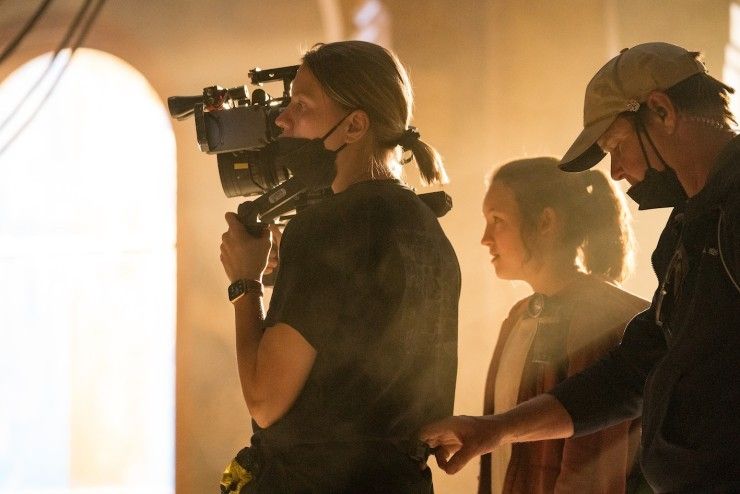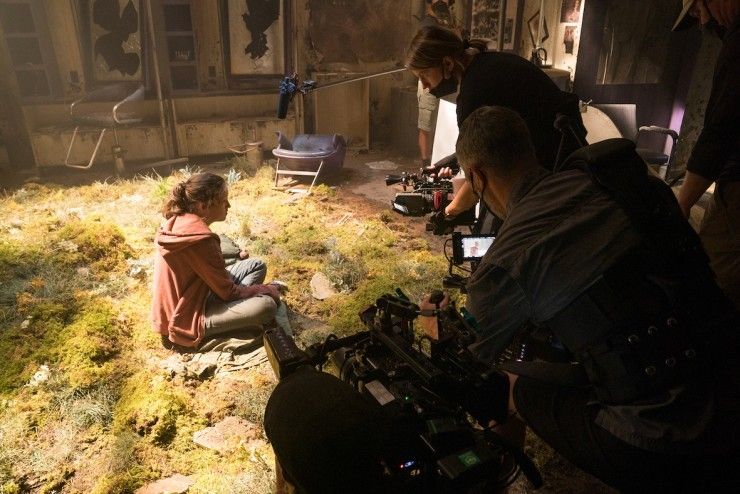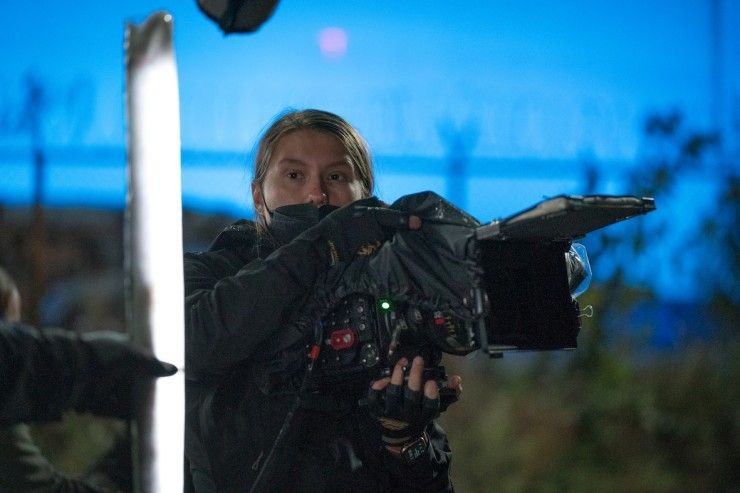
What lenses and cameras captured the haunting and stunning world of HBO’s The Last of Us?
There is no denying the power behind the haunting visuals in The Last of Us. Based on the 2013 video game from Naughty Dog, game creator Neil Druckmann and Chernobyl creator Craig Mazin crafted a post-apocalyptic world that is distant yet eerily too familiar for many viewers born before the 21st century.
The Last of Us is a world where time seemingly stops on September 26, 2003, also known as Outbreak Day. Those who managed to survive the violent and “infected” cordyceps now struggle to rebuild their lives from the ruins of civilization. Joel (Pedro Pascal), a grieving father who still carries the weight of his loss two decades later, and Ellie (Bella Ramsey), a teenage girl who possesses immunity that could potentially cure the world, are among these survivors and have been unexpectedly thrust together. We follow their perilous journey from Boston’s quarantine zone to the untamed wilderness of the west, where they must confront rebels, raiders, and the infected.
Druckmann and Mazin couldn’t craft this haunting visual style themselves. From the detailed production design of John Paino to Cynthia Summers’ apocalyptic surviving costume design, each visual detail emphasizes the brutal and heartbreaking world of the show.
The Last of Us cinematographer Ksenia Sereda added another layer to the show’s bruting visual language through the help of Cooke Optics. Sereda shared why she chose these lenses from Cooke Optics, and her experience working with these Cooke Optics lenses on the HBO series.
Let’s get into it!
What Lenses Were Used on The Last of Us?
Sereda wanted lenses that captured the emotional heart of The Last of Us. In an exclusive interview with Cooke Optics, Sereda revealed that she and the other three cinematographers – Eben Bolter, Nadim Carlsen, and Christine A. Maier – used Cooke S4/i spherical lenses to capture the series.
After a short period of tests, Sereda chose to pair Cooke S4/i spherical lenses with the ARRI ALEXA Mini camera.
“I am obsessed with spherical lenses,” she said. “I wanted to keep close-ups on the normal side and not go too long or wide lenses because, working from the characters’ perspective on the story, we needed to be able to stay close but at the same time preserve the depth of background. I also wanted to work within the range of 25mm-50mm lenses, so the challenge was: which lens won’t distort faces at 25mm; where can I come up with wide lens on the close-up without being too poppy? Cooke S4/i was an excellent choice for this.”

What Made Cooke S4/i Lenses the Right Choice?
The Last of Us game is a visual masterpiece and is one of the best-looking games on the PlayStation. The details in texture mapping, high texture resolution, and high-fidelity backgrounds captivate players instantly, making it a world that you can easily get lost in.
The game’s already cinematic visual language was not lost upon Serenda and the other cinematographers working closely with Druckmann and Mazin to find a way to translate the atmosphere of this dystopian world to the screen.
“[I]t was a lot of pressure to translate the video game language into the TV series because it’s already beautiful and everyone, including nearly all of the crew, loved the game,” Serenda told Cooke Optics.
Rather than focus on the hardness of the post-apocalyptic world, Serenda chose to emphasize the world around the characters.

“Some may say that The Last of Us is a post-apocalyptic ‘fight for survival’ story, but for me, the real story is about people building new lives in new circumstances. It’s about friendship and love, and the most important thing is the characters’ journeys,” Serenda said. “Part of the joy of the game is the interactivity with the characters, seeing action from their perspective, so for the TV show we wanted to stay as close to them as possible, and that informed our choice of camera and lenses.”
The Cooke S4/i spherical lenses provided a distinctive focus plane, but the falloff between the focus plane and the defocused area is smooth, creating a subjective perspective of the world around each character.
Serenda worked without filters. This helped her to create a specific texture and warmth in close-ups that were enhanced with their chosen system of lights, lenses, and camera.
The organic, soft look of Cooke lenses nailed the warmer look that Serenda wanted to create for the emotional beats of the story. Even though Cookes can run on the warmer side, the aesthetics of the cooler shots were not lost.

In The Last of Us, many of the intense scenes played with shadows, darkness, and light to help create visual suspense while playing on the reality of a world that lacked electricity. The Cooke lenses helped in these low lights and flares that challenged the team of cinematographers.
“Some of the scenes went into areas where people did not have electricity, so the scenes were literally built only with flashlights. With the Cooke S4/i’s, you know that when you’re working with flaring, it’s sympathetic – it’s never too overwhelming or over-tinted,” said Sereda. “Shooting low light with the S4/I and ARRI ALEXA Mini produces beautiful work with very high-intensity areas and low exposed areas. In general, I really love to work on the bottom of the exposure curve, I really love to pack the image from 60% and down, having the whites always in a very low range to give us the opportunity of more shades and textures in the blacks.”
The look of HBO’s The Last of Us is soft and simple, allowing the cinematography to naturally dissolve into the background while giving the characters’ performance center stage. There is power in simplicity, and Serenda understood this perfectly in her choice to go with the Cookie S4/i.
What did you think of DP Ksenia Sereda’s camera and lens choices for The Last of Us? Let us know in the comments!














